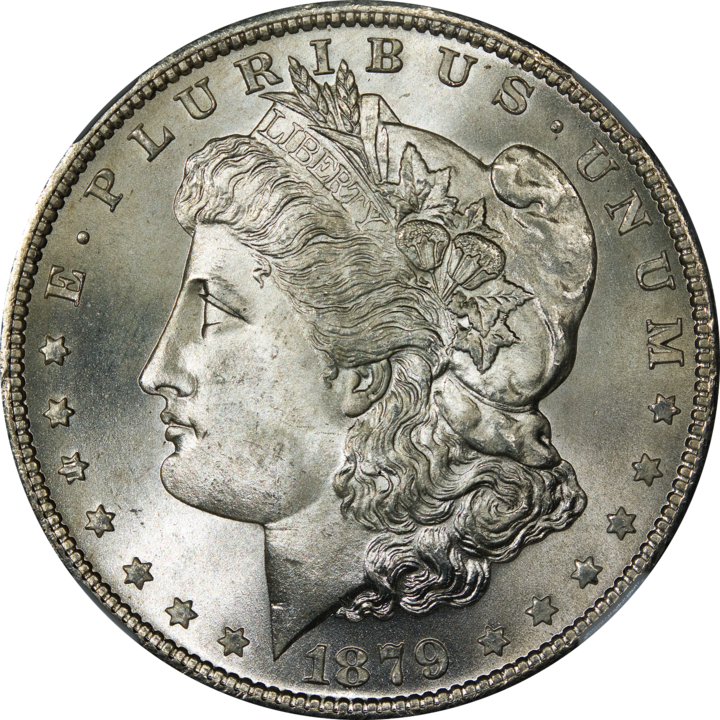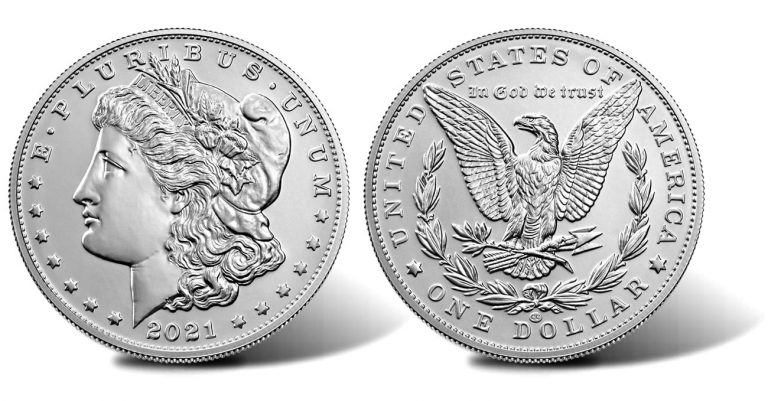
Morgan Dollar: Coins of the Old West
Category: Coins of the U.S. Mint
In the world of coin collecting, the legacy of the Morgan Dollar is celebrated by many as the pinnacle of numismatic excellence. With its iconic Lady Liberty portrait and the majestic eagle soaring on its reverse, one could easily say that the coin captures the nation’s ideals of harmony, liberty, and patriotism.
Birth of the Morgan Dollar (1878)
The production history of the Morgan Dollar is marked by its journey through key events in American history, including its role in the passage of significant silver-related legislation.
It was first minted in 1878 as a result of the Bland-Allison Act which was passed as a response to the silver mining interests in the Western states. New silver dollars were needed to support the burgeoning economy. As a result, the Mint mandated the production of a new silver dollar coin, the Morgan Dollar.
The Designer
The coin is named after George T. Morgan, the young and talented British engraver who won the design competition held by the U.S. Mint, earning him the opportunity to design the obverse of the coin. He chose to feature a left-facing profile of Lady Liberty, departing from the customary practice of using allegorical and historical figures such as Greek goddesses and past presidents.

1879 Morgan Dollar (Obverse)
Morgan's Lady Liberty wears a Phrygian cap to symbolize freedom and liberty, while her agricultural wreath consisting of cotton and wheat represents the nation's agricultural heritage and bounty. This design element was thoughtfully chosen to highlight the significance of agriculture in the economic development of the late 19th century.
Production and Minting Facilities
The coin was minted at several U.S. Mint facilities, including Philadelphia (no mintmark), New Orleans (O mintmark), San Francisco (S mintmark), Carson City (CC mintmark), and Denver (D mintmark). Not all mint facilities made coins in every year of issue.
The Philadelphia Mint, often referred to as the "Mother Mint," was the primary facility for the production of the Morgan Dollar. Without a mintmark, these coins were the first to roll off the presses and represent the heart of the Morgan Dollar's birthplace. The Philadelphia Mint's significance in the creation of this coin cannot be overstated, as it was responsible for the majority of its production.
Pause in Production (1904)
The Morgan Dollar, which had seen continuous production since its inception in 1878, encountered a substantial pause in 1904. This was due to legislative changes in the Bland-Allison Act of 1878 and the Sherman Purchase Act of 1890, which required the U.S. government to purchase large quantities of silver to produce silver dollars.
During the early 1900s, the silver reserves were becoming depleted and the U.S. economy had growing concerns about inflation, playing a role in the halt of silver coin production, including the Morgan Dollar. Because of the growing demand for silver, many of the coins were being stored in vaults and not used in daily transactions. This lack of circulation also raised questions about the practicality of continuing to mint silver coins.
Brief Revival of the Morgan Dollar (1921)
The pause in production that started in 1904 would endure until 1921 with the introduction of the Peace Dollar. The Peace Dollar was minted in the aftermath of World War I, and its design reflected the aspirations of a world seeking peace. In the shadow of the Great War, the Morgan Dollar saw a revival in 1921, albeit for a brief period, before being officially discontinued and replaced by the Peace Dollar.
Many of the circulated Morgan Dollar coins were only worth their bullion value. Some Morgan Dollar issues, however, were more valuable due to lower mintages or other historical factors. The Carson City coins, for example, are considered more valuable because they generally had lower mintages compared to other facilities.
100th Anniversary Commemorative Issue
In 2021, under the initiative of then-Mint Director David Ryder, the Morgan Dollar made another brief comeback as part of the Morgan and Peace Dollar Anniversary Coin Program to pay tribute to the 100 years since the transition that occurred in 1921. This special coin, minted with an uncirculated finish, pays homage to the original Morgan Dollar by recognizing the mint facilities that played a role in their production.

2021 Morgan Dollar with CC Privy Mark on Reverse
The coins made by the Denver and San Francisco Mint facilities each bear the mint marks “D” and “S”, respectively, while the Philadelphia Mint produced three variations:
- One without a mint mark to recognize the original Philadelphia Mint
- One with an “O” privy mark to recognize the New Orleans Mint
- One with a “CC” privy mark to recognize the Carson City Mint
Morgan Dollar Subsequent Issues
In 2023, the U.S. Mint also released Morgan Dollar coins in uncirculated, proof, and the first-ever reverse proof finish. There were plans to release proof editions as well for 2022 but due to the limited supply of silver blanks, no new coins were produced.
This delay in production heightened anticipation for the 2023 release, especially for the reverse proof finish coins that featured a stunning, inverted aesthetic.


